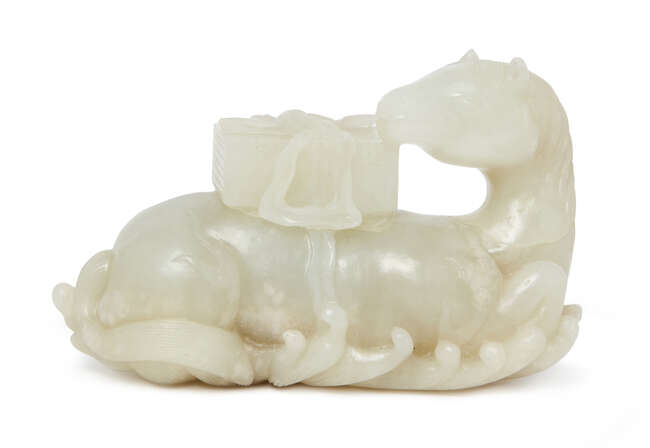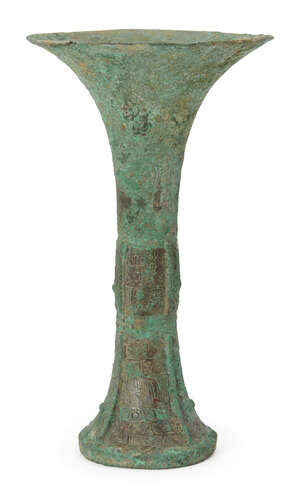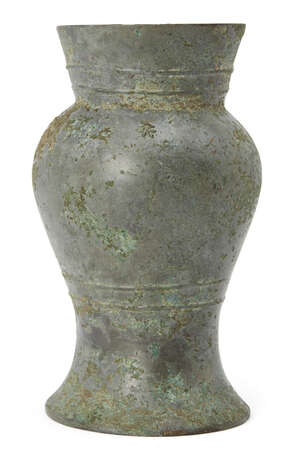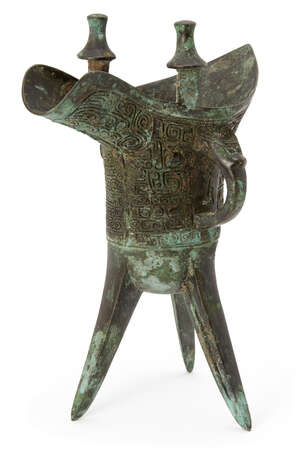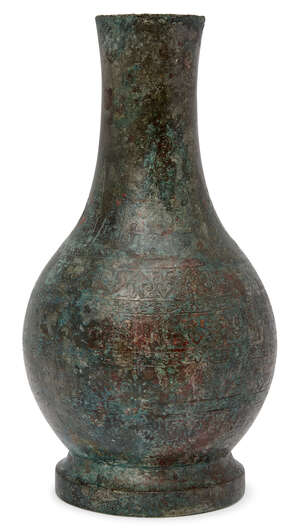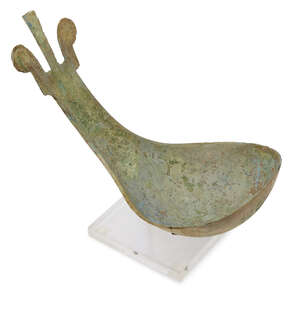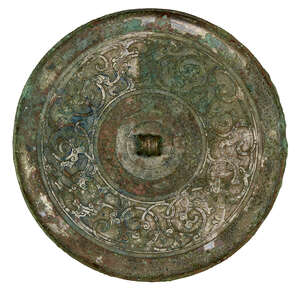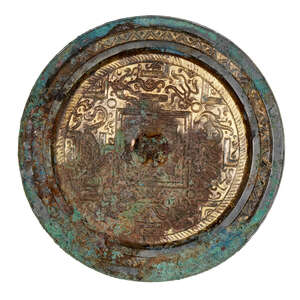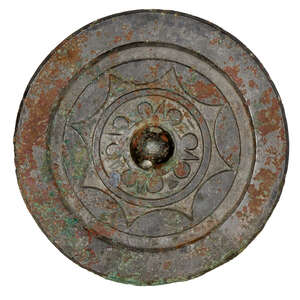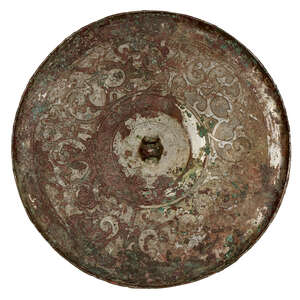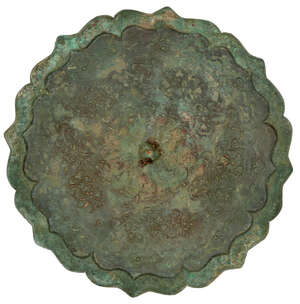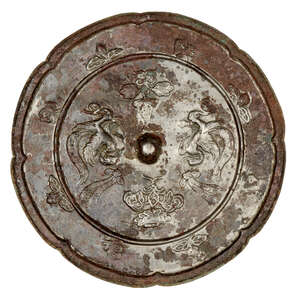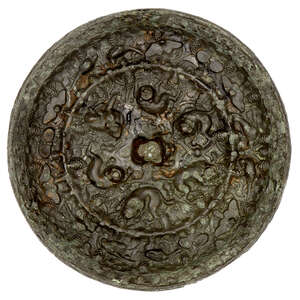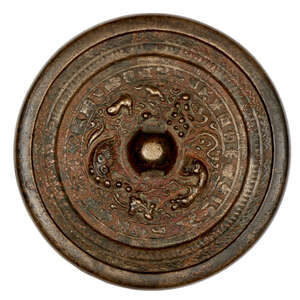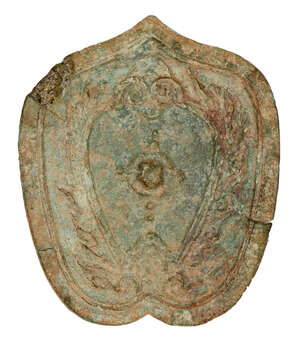Tuesday 21 May 2019
A fine Chinese white jade carving of a horse, 18th century, carved in recumbent pose on...
View MoreLot 260
Description
A fine Chinese white jade carving of a horse, 18th century, carved in recumbent pose on crested waves, with its head turned back towards the heavenly texts tied to its back with a ribbon, with finely incised mane and tail, and flames issuing from all four legs, 9.5cm long
Note: Power, knowledge and imperial authority are the defining symbolic traits of this jade carving. The horse itself is an enduring symbol of speed, perseverance, imagination and youthful energy, however the motif of riding atop of a horse has another layer of meaning. The phrase mǎ shǎng 马上, which may be translated as on horseback, is a metaphor for arrive quickly. The books, symbols of learning and one of the Four Signs of a Scholar, are therefore indicative of a wish for knowledge to be attained quickly. The tied ribbon holding these books in place is also of symbolic importance, and is representative of longevity, and in combination with the books atop the horse express the wish for not just rapid but enduring, permanent knowledge. A common motif found in other jade carvings depict a monkey riding atop a horse, which represents the rebus mǎ shǎng feng hou which may be translated as 'may you receive a swift promotion to a high rank of office'.
The recumbent form of the horse, with the head rear-facing and four legs tucked under, was popularised in the Song dynasty; however this form with the addition of books or scrolls is less common. This motif could be referring to several narratives the first being the Han dynasty story of the introduction of the first Buddhist sutras into China. After Emperor Han Mingdi 漢明帝 saw a vision of the Buddha in a dream, a mission that included the trusted official Cai Yin was dispatched to the Western regions in search of scriptures and images of this God. The envoys returned to China with two Indian monks and a bundle of sacred texts, the divine texts mounted atop a white horse. The emperor subsequently commissioned the construction of the White Horse Temple 白馬寺 in the capital of Luoyang, which still stands today.
The swirling waves at the base of the jade could be a reference to an older Chinese narrative: on a mandate from Heaven, a mythical horse was sent by sea carrying divine manuscripts to be delivered to the emperor, ensuring divine rule and solidifying the emperors connection to heaven. The flames lashing out from the water are symbolic of the emperors fierce zeal, and a desire to rule wisely. The waves also bear imperial symbolic connotations. The word for tide, cháo 潮, sounds the same as the word for imperial court 朝. This homonym is used frequently throughout Chinese art, with waves symbolising the imperial court or a desire to enter the court, and is often used on gifts given wishing the recipient a job in high office.
CF. An example of a jade horse carved complete with books and waves can be found in the Beijing Palace Museum 1995 publication on jade (玉器 (下)) plate 90, page 110. Similar examples are illustrated in Fung and Yeung, Exquisite Jade Carving, p. 103; Hartman-Goldsmith, Chinese Jade, no. 34, p. 66, in the collection of the Saint Louis Art Museum; Nott, The Flowery Kingdom, pl. XLIV, p. 99; Tibet Museum, Jade Selections from Yuan, Ming and Qing Dynasties in the Tibet Museum, no. 101, p. 148; and Zhang, Jadeware (II): The Complete Collection of Treasures of the Palace Museum, nos. 149 and 150, p. 189. Two Song dynasty examples of a recumbent horse jade are published in Chinese Jade Animals (中國肖生玉雕) 1997, Hong Kong Museum of Art (香港藝術館) plates 125 and 127, pages 144-147.
Fees & VAT
Buyer's Premium
The buyer shall pay the hammer price together with a premium thereon of 26% up to £20,000 (31.2% inclusive of VAT), 25% from £20,001 - £500,000 (30% inclusive of VAT), 20% from £500,001 thereafter (24% inclusive of VAT). The premium price is subject to VAT at the standard rate.
VAT
VAT is not charged on the hammer price unless it is stated that there is 'VAT applicable on the hammer price at the end of the description. Buyer's premium is subject to VAT.(ARR) - ARTIST'S RESALE RIGHT
Qualifying living artists and the descendants of artists deceased within the last 70 years are entitled to receive a re-sale royalty each time their work is bought through an auction house or art market professional.
It applies to lots with hammer value over £1,000 as follows:
0 to £50,000 - 4%
£50,000.01 to £200,000 - 3%
£200,000.01 to £350,000 - 1%
£350,000.01 to £500,000 - 0.5%
Exceeding £500,000 - 0.25%
ARR is capped at £12,500
Please note ARR is calculated in euros. Auctioneers will apply current exchange rates.
Export of goods
Buyers intending to export goods should ascertain whether an export licence is required before bidding. Export licences are issued by Arts Council England and application forms can be obtained from its Export Licensing Unit. Details can be found on the ACE website www.artscouncil.org.uk or by phoning ACE on 020 7973 5188. The need for import licences varies from country to country and you should acquaint yourself with all relevant local requirements and provisions before bidding. The refusal of any such licences shall not permit the cancelling of any sale nor allow any delay in making full payment for the lot.
Own a similar item?
Request a ValuationReceive alerts about similar lots
Get StartedContinue Browsing
LOT 261
A Chinese archaic bronze ritual wine vessel, gu, Shang dynasty, 13th-11th century BC,
Estimate: £3000 - £5000
LOT 262
A Chinese archaic bronze ritual food vessel, li, Shang dynasty, of tri-lobed form, with...
Estimate: £1500 - £2500
LOT 263
Three Chinese archaic bronze vessels, Han dynasty, comprising a tripod brazier with...
Estimate: £2000 - £3000
LOT 264
A Chinese bronze vessel, hu, Shang dynasty, with flared rim and bulbous body to spreading...
Estimate: £1500 - £2500
LOT 265
A Chinese archaic bronze ritual wine vessel, jue, Shang dynasty-style, the deep U-shaped body...
Estimate: £4000 - £6000
LOT 266
A Chinese bronze vase, hu, Han dynasty, fine incised to the neck with vertical lappets of...
Estimate: £2000 - £3000
LOT 267
A Chinese bronze ritual ladle, Shang dynasty, mid-Anyang period, with broad bowl and flat...
Estimate: £300 - £500
LOT 268
A Chinese bronze circular mirror, Warring States period, flat cast with intertwined...
Estimate: £800 - £1200
LOT 269
A Chinese parcel-gilt bronze 'TLV' mirror, Western Han dynasty, 2nd-1st century BC, the...
Estimate: £4000 - £6000
LOT 270
A Chinese bronze circular mirror, Han dynasty, the central raised knob surrounded by four...
Estimate: £400 - £600
LOT 271
A Chinese bronze circular mirror, Warring States period, flat cast with intertwined...
Estimate: £800 - £1200
LOT 272
A Chinese bronze shaped mirror, Northern Song dynasty, the central knob within flowerhead...
Estimate: £1000 - £2000
LOT 273
A Chinese bronze lobed mirror, Tang dynasty, the central knob surrounded by the phoenixes...
Estimate: £2000 - £3000
LOT 274
A large Chinese bronze 'lion and grapes' circular mirror, Tang dynasty, the central knob...
Estimate: £700 - £1000
LOT 275
A Chinese bronze 'lion and grapes' circular mirror, Tang dynasty, the central knob...
Estimate: £400 - £600
LOT 276
A Chinese bronze leaf-shaped 'owl' mirror, Shang dynasty, decorated with a stylised owl...
Estimate: £500 - £800
 Newsletter Signup
Newsletter Signup
 Keyword Alerts
Keyword Alerts
Would you like to receive personalised keyword alerts when new catalogues go live. If so, please indicate these below
Set a password to save your keyword alerts
Passwords are a minimum of 7 characters and must include an upper case letter, a lower case letter, a number and a special character (e.g., !@#$%^&*).


